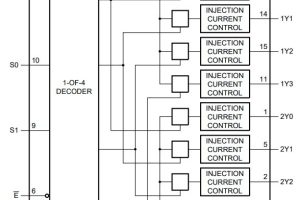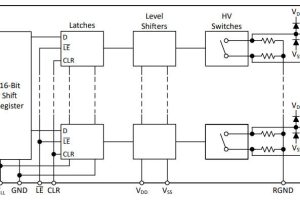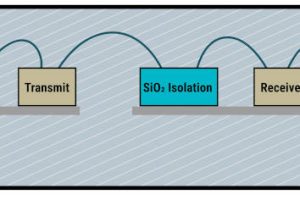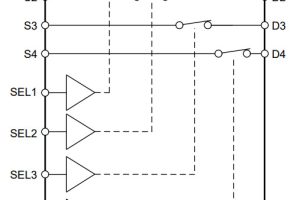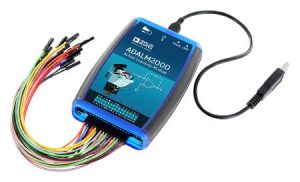
USB-powered and controlled, ADALM2000 Active Learning Module includes: two analog differential inputs, two analog single-ended outputs, and two power supplies.
12bit 100Msample/s DACs and ADCs provide the digital interface, and once coupled with the firm’s Scopy software running on a computer (Windows, Linux or OS X), the module becomes:
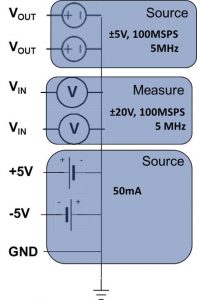 Two-channel 30MHz USB digital oscilloscope
Two-channel 30MHz USB digital oscilloscope- Two-channel arbitrary function generator
- 16-channel digital logic analyser (3.3V CMOS and 1.8V or 5V tolerant, 100Msample/s)
- 16-channel pattern generator (3.3V CMOS, 100Msample/s)
- 16-channel virtual digital I/O
- Two input/output digital trigger signals for linking multiple instruments (3.3V CMOS)
- Single channel voltmeter (AC, DC, ±20V)
- Network analyser – Bode, Nyquist, Nichols transfer diagrams of a circuit. 1Hz to 10MHz
- 50MHz spectrum analyser – power spectrum and spectral measurements (noise floor, SFDR, SNR, THD)
- Digital Bus Analysers (SPI, I²C, UART, parallel – >60 protocols)
- Two programmable power supplies (0…+5V , 0…-5V)
“The ADALM2000 works as a portable lab that, when used with a host, can augment classroom learning. It was designed for university students and self-learners interested in more advanced circuit and electronics classes,” said the firm. “Scopy provides an intuitive graphical user interface and teachers can leverage the catalogue of lessons and labs available and create their own coursework.”
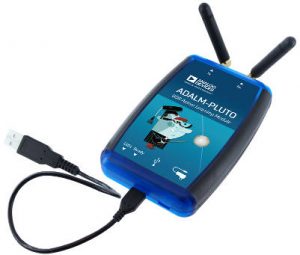 ADALM-PLUTO is the Software-Defined Radio Active Learning Module. It has independent receive and transmit channels operating in full duplex, and is intended to help with the fundamentals of software-defined radio, radio frequency work and wireless communications.
ADALM-PLUTO is the Software-Defined Radio Active Learning Module. It has independent receive and transmit channels operating in full duplex, and is intended to help with the fundamentals of software-defined radio, radio frequency work and wireless communications.
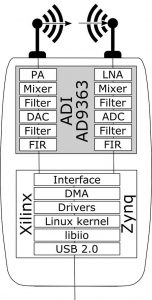 It can generate or acquire RF signals from 325MHz to 3.8GHz at up to 61.44Msample/s.
It can generate or acquire RF signals from 325MHz to 3.8GHz at up to 61.44Msample/s.
Self-contained and USB powered, it is accessed through libraries for Windows, Linux or OS X “allowing students to learn and explore x86 and ARM platforms,” said ADI. It can be used with MATLAB, Simulink, or GNU Radio.
 Electronics Weekly Electronics Design & Components Tech News
Electronics Weekly Electronics Design & Components Tech News
